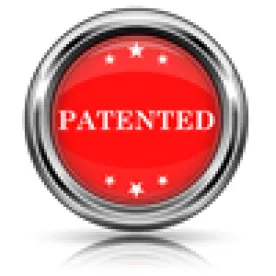ZTE Corp. v. ContentGuard Holdings, Inc.; Intelligent Bio-Systems, Inc. v. Illumina Cambridge Limited; Medtronic, Inc. v. Robert Bosch Healthcare Systems, Inc.; Unilever, Inc. v. Proctor & Gamble Co.; Prism Pharma Co., Ltd. v. Choongwae Pharma Corporation; Unified Patents, Inc. v. Personal Web Technologies, LLC and Level 3 Communications, LLC; and Medtronic, Inc. v. Nuvasive, Inc.
The Patent Trial and Appeal Board (PTAB) recently designated seven decisions from inter partes review (IPR) proceedings as informative opinions: ZTE Corp. v. ContentGuard Holdings, Inc., Case No. IPR2013-00454 (PTAB, Sept. 25, 2013) (Kim, APJ); Intelligent Bio-Systems, Inc. v. Illumina Cambridge Limited, Case No. IPR2013-00324 (PTAB, Nov. 21, 2013) (Crumbley, APJ); Medtronic, Inc. v. Robert Bosch Healthcare Systems, Inc., Case No. IPR2014-00436 (PTAB, June 19, 2014) (Quinn, APJ); Unilever, Inc. v. Proctor & Gamble Co.,Case No. IPR2014-00506 (PTAB, July 7, 2014) (Obermann, APJ); Prism Pharma Co., Ltd. v. Choongwae Pharma Corporation, Case No. IPR2014-00315 (PTAB, July 8, 2014) (Yang, APJ); Unified Patents, Inc. v. Personal Web Technologies, LLC and Level 3 Communications, LLC, Case No. IPR2014-00702 (PTAB, July 24, 2014) (Zecher, APJ); and Medtronic, Inc. v. Nuvasive, Inc., Case No. IPR2013-00487 (PTAB, Sept. 11, 2014) (Green, APJ).
In all of these opinions, denied institution under 35 U.S.C. § 325(d), which states: “In determining whether to institute or order a preceding under . . . chapter 31, the Director may take into account whether, and reject the petition or request because, the same or substantially the same prior art or arguments previously presented to the Office.”
In ZTE Corp. v. ContentGuard Holdings, Inc. the petitioner filed a petition against claims in a patent for which it had previously filed an IPR petition. The earlier IPR petition sought review of all claims of the challenged patent, but the Board instituted review on just a subset of the claims. ZTE filed the second petition to challenge the claims not under review in the first IPR. While the second petition was not timely under 35 U.S.C. § 315(b), ZTE filed it with a motion for joinder of the proceeding with the first IPR proceeding. The motion for joinder was denied however, because the earlier proceeding was terminated as the patent owner had filed a request for, and was granted, adverse judgment.
In Intelligent Bio-Systems, Inc. v. Illumina Cambridge Limited the petitioner filed a petition seeking review of all claims of the challenged patent. In an earlier, co-pending IPR proceeding, the Petitioner had sought review of all claims of the same patent. The second petition was filed because the petitioner became aware of the relevance of certain prior art only after the filing of the first petition. The Board found that the second petition presented the same or substantially the same prior art and arguments as the first. In the first proceeding, the patent owner filed a non-contingent motion to amend the claims, which requested cancellation of claims 1-8 and entry of substitute claims. The Board noted that because the patent owner had submitted the new prior art as part of its motion to amend claims, that prior art would be considered by the Board in the first proceeding.
In Medtronic, Inc. v. Robert Bosch Healthcare Systems, Inc. the petitioner sought review of the same patent that its recently acquired entity, Cardiocom, had challenged in a prior IPR proceeding. The Board denied two of Medtronic’s obviousness-based grounds as being the same or substantially the same as those in the earlier IPR. The remaining grounds were rejected because the Board discerned that there was insufficient evidence of a reasonable rationale for the combination of prior art.
In Unilever, Inc. v. Proctor & Gamble Co. the Board denied Unilever’s IPR petition because each ground alleged obviousness over one or more prior art references raised in an earlier petition filed by Unilever for the same patent. The Board found that the later petition was essentially an attempt to cure the grounds in the first petition which were not instituted: “the instant Petition uses our prior Decision on Institution to bolster challenges that were advanced, unsuccessfully, in the [earlier] Petition.”
In Prism Pharma Co., Ltd. v. Choongwae Pharma Corporation the Board denied institution because the cited prior art had been considered during the original prosecution of the challenged patent. The petitioner, who was a co-inventor of the challenged patent, had filed his own application containing similar subject matter as the challenged patent. In at least two declarations submitted by the petitioner in support of his challenge, the petitioner explained how his published application anticipated the challenged patent. The Board noted that ultimately the examiner and the examiner’s supervisor concluded that the claims were patentable over that reference.
In Unified Patents, Inc. v. Personal Web Technologies, LLC and Level 3 Communications, LLC, the Board denied the petition based on co-pending IPR proceedings initiated by third parties against the same patent. The petitioner’s grounds of invalidity were based on a single prior art reference, and each of the prior proceedings presented grounds of unpatentability based on the same piece of prior art for many of the claims. The Board noted that in one of the prior proceedings, the patent owner had appealed the Board’s decision that most of the challenged claims were unpatentable to the Federal Circuit and, further, that all of the challenged claims were under review in the other proceeding.
In Medtronic, Inc. v. Nuvasive, Inc. the Board denied the petition as essentially being an attempt to cure a previous petition for which institution was denied. The Board also noted that another prior petition filed by the petitioner against the same patent involved all of the challenged claims in the petition.
Practice Note: The designation of these opinions as “informative” is a signal that the PTAB will, when possible, avoid duplicating review of the same art or arguments previously submitted for a given patent. The opinions also make clear that petitioners seeking to further challenge claims for which institution was initially unsuccessful should not expect to be able to rehabilitate the initial grounds by simply substituting new prior art for old. More meaningful changes, such as relying on new primary references, will be needed to avoid an invocation of 35 U.S.C. § 325(d).




 />i
/>i

